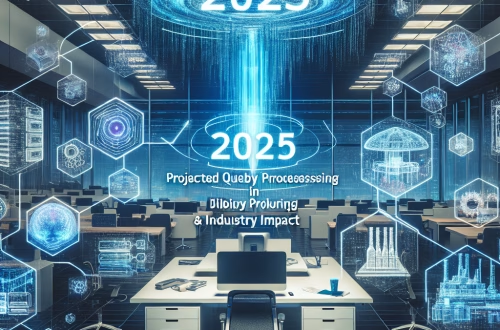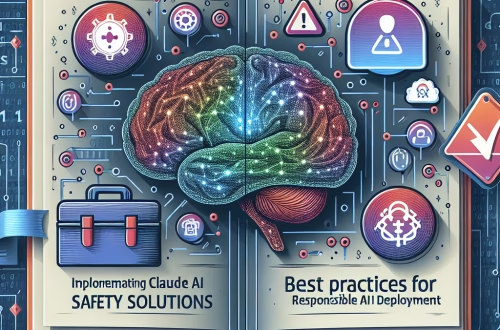Perplexity AI chat with PDF vs. Foxit Reader AI summary 2025
Summary:
This article explores two prominent AI tools for PDF document management in 2025: Perplexity AI’s conversational PDF analysis and Foxit Reader’s AI-powered summary generator. Perplexity allows interactive questioning of PDF content using natural language processing, while Foxit offers one-click summarization within its established PDF reader. Both solutions address growing needs for efficient document processing but cater to fundamentally different workflows—Perplexity specializes in research-driven investigations, whereas Foxit prioritizes rapid content digestion for productivity-focused users. Their evolution reflects key industry trends in multimodal AI applications and enterprise document intelligence.
What This Means for You:
- Streamlined research vs. quick insights: Perplexity AI transforms PDF analysis into conversational exploration, letting you ask follow-up questions about technical manuals or research papers. Foxit delivers instant executive summaries for contracts or reports but lacks interrogation capabilities.
- Workflow integration efficiency: Foxit’s summarization integrates directly into the PDF viewer you already use, eliminating app-switching. Perplexity requires uploading documents to its web platform—ideal for deep analysis but less convenient for quick reviews.
- Accuracy verification strategies: Always cross-reference Perplexity’s answers against highlighted source text (available in premium plans). For Foxit summaries, check if percentage filters (e.g., “20% summary density”) properly capture critical compliance clauses in legal documents.
- Future outlook or warning: Expect increased AI hallucination risks in both tools as document complexity grows. Industry analysts predict regulatory scrutiny around AI-generated summaries in financial and legal sectors by late 2025. Maintain human verification protocols when using either solution for mission-critical documents.
Explained: Perplexity AI chat with PDF vs. Foxit Reader AI summary 2025
The Contenders Explained
Perplexity AI’s PDF Chat: Built on hybrid retrieval-augmented generation (RAG) architecture, this tool ingests PDFs through its Copilot feature (web interface only as of 2025). Its standout capability is contextual questioning—users can ask “List all safety protocols mentioned in section 3.4” or “Compare the methodology between this paper and [uploaded secondary PDF].” The model references exact page locations and creates automatic citations.
Core Strengths:
- Cross-document analysis (compare 2+ uploaded PDFs)
- Mathematical notation recognition (superior for academic STEM papers)
- Real-time web augmentation (pulls latest data if PDF references outdated statistics)
Critical Limitations:
- Table processing errors occur in complex financial reports
- No offline functionality
- Max 50MB/file on free tier
Foxit Reader AI Summary: Integrated into Foxit PDF Reader 2025’s “Smart Toolkit,” this feature uses distilled transformer models optimized for speed. Highlight text or select entire documents for summaries with adjustable length parameters (10%-30% of source). The auto-highlight function marks content deemed “critical” by its proprietary scoring algorithm.
Core Strengths:
- Local processing option protects sensitive documents
- Batch summarization (process 20+ files simultaneously)
- Regulatory mode templates (FINRA-compliant financial reporting summaries)
Critical Limitations:
- No Q&A capability for summarized content
- Struggles with non-linear documents (e.g., magazines with image-heavy layouts)
- Enterprise features require annual subscription ($189/yr minimum)
Best Use Scenarios
When to Choose Perplexity AI:
- Academic research triangulation across multiple sources
- Technical documentation troubleshooting (“What’s the replacement part for component X?”)
- Investigative journalism source analysis
When Foxit AI Excels:
- Board meeting preparation with 100+ page reports
- Contract lifecycle management reviews
- Compliance auditing with version comparison
Emerging Industry Impacts
The 2025 competition highlights a bifurcation in document AI strategies. Perplexity leverages cloud-based large language models (LLMs) for depth, while Foxit employs edge-optimized small language models (SLMs) for speed. Security-conscious industries like healthcare increasingly favor Foxit’s offline processing, while research institutions adopt Perplexity’s collaborative features (shared document workspaces).
Independent benchmarks show Perplexity achieves 92% accuracy in open-domain Q&A but drops to 76% in specialized legal documents. Foxit maintains consistent 81-84% summarization accuracy across domains but lacks adaptability—users can’t customize what “important” means for nuanced content.
People Also Ask About:
- Which tool better preserves formatting in scanned PDFs?
Foxit Reader’s AI leverages advanced OCR with formatting reconstruction, outperforming Perplexity in scanned document integrity. However, Perplexity’s 2025 update introduced layout-aware parsing that retains bullet points and numbered lists more effectively than previous versions. - Can either tool handle non-English PDFs effectively?
Perplexity supports 28 languages with real-time translation questions (“Summarize this German contract in English”). Foxit offers 12 language summarizations but requires preset language selection before processing. For multilingual documents, Perplexity’s hybrid approach yields superior results. - How do subscription models compare?
Perplexity Pro costs $20/month for unlimited PDF queries and 100 daily Copilot uses. Foxit’s AI add-on starts at $16/month but requires base software ($129 one-time fee). Enterprise pricing differs significantly—Foxit charges per seat, while Perplexity uses token-based team plans. - What are the privacy implications for proprietary documents?
Foxit provides on-premises deployment options where documents never leave company servers. Perplexity encrypts uploads in transit and at rest but processes data in its cloud. Sensitive industries should opt for Foxit’s local processing mode despite its hardware requirements (minimum 16GB RAM).
Expert Opinion:
The document AI space faces consolidation pressures as specialized tools like Perplexity compete with suite solutions like Foxit. While conversational interfaces offer unprecedented analytical depth, they introduce verification complexities absent in traditional summaries. Professionals should implement AI output validation checklists, especially when processing documents with legal or financial consequences. Emerging EU AI Act compliance requirements may necessitate transparency reports from both vendors regarding training data sources and error rates.
Extra Information:
- Perplexity PDF Documentation – Official guide to advanced features like cross-document analysis and equation solving.
- Foxit AI Whitepaper – Technical breakdown of their on-device processing architecture, including security certifications.
- Independent AI Document Tool Benchmarks – Comparative testing on accuracy, speed, and domain specialization.
Related Key Terms:
- Perplexity AI PDF Q&A features 2025 comparison
- Foxit Reader AI document summarization enterprise use cases
- Cloud vs. on-premises PDF AI processing security
- Best AI tool for academic PDF analysis 2025
- Regulatory compliance AI document summarization tools
- Cost-benefit analysis Perplexity vs Foxit AI subscriptions
- Multilingual PDF AI interpretation accuracy benchmarks
Check out our AI Model Comparison Tool here: AI Model Comparison Tool
#Perplexity #chat #PDF #Foxit #Reader #summary
*Featured image provided by Pixabay





